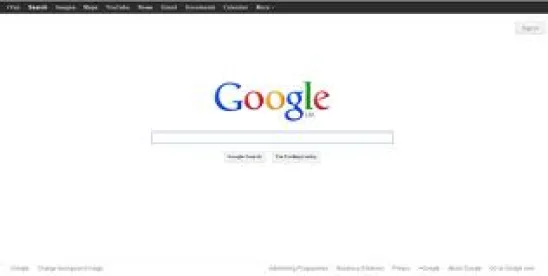On 5 April 2021, the U.S. Supreme Court resolved a major copyright dispute that had wound through the federal courts for over a decade. In a 6-2 decision written by Justice Breyer, the Supreme Court held that Google’s copying of roughly 11,500 lines of declaring Java code for Google’s mobile Android platform was a fair use as a matter of law and thus not copyright infringement. The decision addresses the application of copyright law to software and updates and extends the Supreme Court’s copyright fair use jurisprudence.
Background and Prior Decisions
The dispute between Google and Oracle originated from Google’s choices in creating its mobile Android platform. When initially developing Android, Google used parts of the widely adopted Java API (application programming interface) technology to help maximize the platform’s accessibility and interoperability. Though Google wrote and implemented original code for the vast majority of the platform, it copied approximately 11,500 lines of declaring code from the Java API.1 The Java API was developed by Sun Microsystems, which Oracle acquired in 2010.2 The copied Java API portions allowed programmers fluent in Java to use prewritten computing tasks for their own programs. Without the Java API, it would have been much more difficult—and perhaps, in some cases, impossible—for developers to write software for Android. Much of the software industry relies heavily on the use of APIs.3
In 2010, after failing to reach agreement on a mutually acceptable licensing arrangement, Oracle sued Google in the Northern District of California for infringing its copyright over the copied code. Oracle was required to prove it had a valid copyright in the code and that Google infringed that copyright. After a six-week trial, a jury found limited copyright infringement, and deadlocked on the question of whether Google’s copying constituted fair use, which is a defense to copyright infringement under the U.S. Copyright Act.4 After trial, the district court ruled that the type of code at issue was not protected by copyright because it was too functional and was thus a “system or method of operation” outside the ambit of copyright law.
On appeal, the Federal Circuit reversed, holding that the code was indeed copyrightable, in large part because Google could have created its own functional alternatives. The Federal Circuit also determined that the record before it had insufficient factual findings on the question of whether the copying was fair use and remanded for a trial on that question. Google petitioned for certiorari on the copyrightability determination, but the Supreme Court denied review.
On remand, the jury determined that Google successfully had shown fair use, a decision confirmed by the district court following post-trial motions. Oracle again appealed to the Federal Circuit. This time, the Federal Circuit held that whether the facts in evidence constituted fair use was a question of law for the court and not the jury, which it then decided in Oracle’s favor. Google again petitioned for certiorari, and, on 15 November 2019, the Supreme Court granted review.
The Supeme Court's Opinion
Even before reaching the heart of the Supreme Court’s opinion (i.e., the fair use analysis), there are two notable takeaways. First, the justices5 explicitly avoided reaching the copyrightability dispute that was central to the Federal Circuit’s first decision in the case and one of the two issues the Supreme Court had accepted for its consideration. Instead, the Supreme Court “assume[d], but purely for argument’s sake, that the entire Sun Java API falls within the definition of that which can be copyrighted.” The Supreme Court left unresolved the fundamental issue regarding whether the declaring code at issue is copyrightable. One might assume this was because the six-member majority did not have a consensus view on this question, as distinct from the fair use question.
Second, the Supreme Court held that review of a jury verdict on copyright fair use is a “mixed question of law and fact” and subject, at least in part, to de novo appellate review. The Supreme Court directed that a reviewing court should “try to break” its review “into its separate factual and legal parts, reviewing each according to the appropriate legal standard.” In this case, that “primarily involves legal work.”
The Supreme Court then turned to the crux of its opinion, resolving whether Google’s copying of the applicable code constituted fair use under the Copyright Act.6 The Supreme Court examined the four statutory fair use factors and found that all four weighed in favor of fair use. After a concise overview of copyright fair use jurisprudence, the Supreme Court began “for expository reasons” with factor two: “the nature of the copyrighted work.” The Supreme Court found that the copied code was “inextricably bound” to the “idea of organizing task,” the “division of computing tasks,” and “the use of specific commands known to programmers.” Because the copied code was so closely tied to uncopyrightable ideas and functionality,7 the copied code was far from the creative “core” of copyright. Conversely, the uncopied implementing code written by Google for use in smartphones showed substantial creativity. Thus, the second factor weighed in favor of finding fair use.8
Next, the Supreme Court examined factor one: the “purpose and character of the use.” The Supreme Court noted that while Google copied the code exactly and for the same reason as it existed in Java, Google created a new product, namely a mobile smartphone platform. The Supreme Court noted the substantial support of the technology industry (in amicus briefs) for a finding that this type of innovation is a reasonable fair use. The Supreme Court found the purpose and character of Google’s use was “transformative,” and that factor also weighed in favor of finding fair use.9
The Supreme Court then examined factor three: the “amount and substantiality of the portion used.” The Supreme Court determined that the 11,500 copied lines should be viewed not in isolation but as a part of the entire Java API computer codebase, which contained over 2.8 million lines of code. Thus, the Supreme Court found that the copied portion of the protected work was relatively small (approximately 0.4 percent). The Supreme Court also rejected the Federal Circuit’s conclusion that Google could have achieved Java compatibility by copying only the 170 lines of code necessary to write in Java. The Supreme Court reasoned that Google’s “legitimate objectives” were broader and the other copied lines were necessary for Android programmers to “unlock [their] creative energies” and fully take advantage of the Java functionality. Thus, the Supreme Court found the third factor also weighed in favor of finding fair use.
Finally, the Supreme Court addressed the fourth factor: market effects. Here, the Supreme Court noted the “danger of circularity” posed by considering unrealized licensing opportunities in fair use cases, because a copyright plaintiff could theoretically have licensed the original material for whatever was the purported infringing use in nearly every case. As noted above, Google and Oracle previously discussed a license to use the code, but the two parties were unable to agree on terms. Instead, relying on evidence put in front of the jury at the trial court level, the Supreme Court determined that “neither Sun’s effort to obtain a license nor Oracle’s conflicting evidence can overcome evidence indicating that, at a minimum, it would have been difficult for Sun to enter the smartphone market, even had Google not used portions of the Sun Java API.” The Supreme Court also considered the public interest, finding the copying of the declaring code facilitated programmers’ development and creativity in developing new applications and uses. The Supreme Court determined that the fourth factor also weighed in favor of a finding of fair use.
In its conclusion, the Supreme Court found that Google’s reimplementation and minimal copying of the Java “user interface, taking only what was needed to allow users to put their accrued talents to work in a new and transformative program … was a fair use of that material as a matter of law.”
What the Supreme Court's Decision Means for Creative Industries (Including Software)
The Supreme Court’s decision in Google v. Oracle continues its efforts over the past decades to balance the need for technological and creative innovators to make use of existing works, with enabling creators to be compensated for the reuse of their works by others. The Supreme Court’s decision is consistent with (i) its 1984 Sony Betamax decision10 holding that copying for time-shifting purposes was a fair use, and (ii) its 1994 decision in the 2 Live Crew case11 confirming that a commercial use could be a fair use. The Supreme Court’s decision also affirms the principle that seeking to negotiate a license, unsuccessfully, before claiming fair use, should not undermine the argument for fair use. Most importantly, within the software industry, the decision provides software developers with flexibility to work with limited amounts of existing, highly functional code when developing new products and services.
Finally, outside the software industry, the Supreme Court’s decision illustrates the importance of the various factual considerations that enter into the fair use balancing test as distinct from generally applicable legal principles. Whether any specific use is a fair use remains a judgment call, relatively easy to predict away from the margins but more difficult to assess in any conclusive manner for edge cases such as appropriation art.12
1 Google actually created its own library of APIs, described as implementing code, but it copied the names or “declaring code” from Oracle’s API. Declaring code names the methods, classes, and packages associated with the API.
2 For simplicity, we generally refer to Oracle and Sun as just “Oracle” in this alert.
3 As the Supreme Court noted, “[t]he record here demonstrates the numerous ways in which reimplementing an interface can further the development of computer programs” and that the jury “heard that the reuse of APIs is common in the industry.” In general, the Supreme Court’s opinion provides a superb explanation of the Java and Android platforms and technologies.
4 See 17 U.S.C. § 107.
5 Justice Barrett did not take part in the consideration or decision in this case because she was not yet on the Supreme Court when the case was argued in October 2020.
6 17 U.S.C. § 107 permits the “fair use” of copyrighted material and enumerates four factors for consideration:
- the purpose and character of the use, including whether such use is of a commercial nature or is for nonprofit educational purposes;
- the nature of the copyrighted work;
- the amount and substantiality of the portion used in relation to the copyrighted work as a whole; and
- the effect of the use upon the potential market for or value of the copyrighted work.
7 Even Justice Thomas in his dissent agreed this type of code is “highly functional.”
8 Even though the Supreme Court did not squarely address the copyrightability of the code at issue, that portion of the opinion may lend some support to arguments in favor of providing limited copyright protection for such code.
9 The Supreme Court also noted that the fact that Google’s use was commercial in nature was not dispositive, and it suggested in dicta that a “bad faith” element of factor one may not have a role in copyright fair use analysis. The Supreme Court’s focus on the transformative nature of Google’s use of the code could also have an important effect on how other courts analyze this factor.
10 See Sony Corp. of Am. v. Universal City Studios, Inc., 464 U.S. 417 (1984).
11 See Campbell v. Acuff-Rose Music, Inc., 510 U.S. 569 (1994).
12 See, e.g., The Andy Warhol Found. v. Goldsmith, Case No. 19-2420, --- F.3d ----, 2021 WL 1148826 (2d Cir. Mar. 26, 2021) (concluding that Andy Warhol’s changes to photographs of the musician Prince did not alter the “overarching purpose and function” of the original work and thus were not sufficiently “transformative” to be fair use as a matter of law).





 />i
/>i
